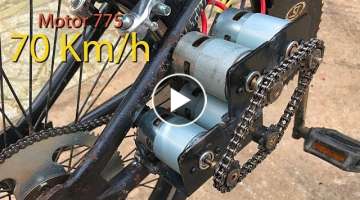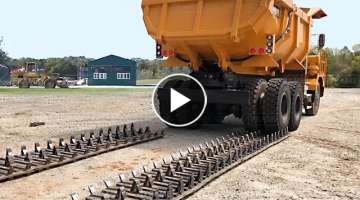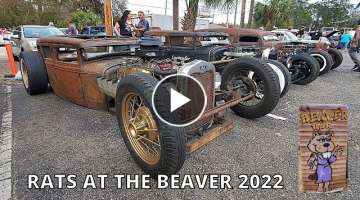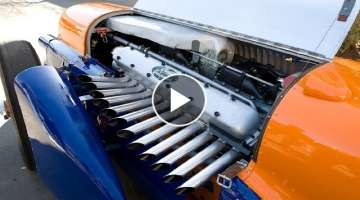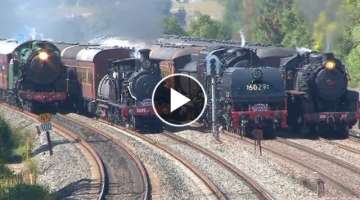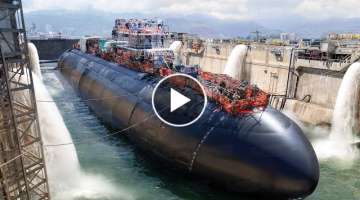Chasing NKP 765 In Northeast Ohio Part 3: Trouble On The Connection (A Greasy Situation)
Sponsored
NKP 765 makes a ferry departure (empty train to the next destination) and heads east from the Lake Erie Area to the Youngstown junction and turns south to the Youngstown line in Ashtabula Ohio. The train was traveling from Cleveland Ohio to Youngstown, Ohio. Filmed in July 2015 Nickel Plate Road no. The 765 is a 2-8-4 "Berkshire" type steam locomotive built for Nickel Plate Road by Lima Locomotive Works in Lima, Ohio in 1944. Classified as an "S-2" class Berkshire, the locomotive operated fast, heavy goods and passenger trains until its retirement in 1958. It is also similar to the Pere Marquette 1225. Last time June 14, 1958 Retired May 4, 1963 Restored September 1, 1979 In 2013, 765 officially Norfolk Southern's 21st Plans saw 21st Century Steam visit most of Norfolk Southern's major terminals between 2013 and 2015. Over the weekend of July 25-26, Berkshire ran trips from Youngstown, Ohio to Ashtabula, Ohio. The train was mostly empty but still has a weight to drag. Besides the tender, there is a Utility (water) tender for more water on the way, which is full and has several loaded coals for the 765. . Besides the loaded utility tender and several coal wagons, the 765 carries 20 passenger cars with it. While the link (and stops) 765 travels in its rather heavy, long train, the 765 still needs to flip 2 switches and follow the sharp curve on the link and simultaneously go south on a 1.24% gradient. All these curves can be very sharp, forming a bond. The 765 would have worked harder to round the curve, but a plan was made. Grease the flange raceways to provide less jamming/resistance at the wheels. A simple fix to make things easier on any link. What went wrong When asked to lubricate the rails, the railroad maintainers did just that. Railroad maintenance workers lubricated the inside edge of the rails where the flanged tracks would roll. The problem arises after the train has come to a complete stop. After realizing what had happened, the railroad keeper put too much grease on the drive wheels. When the wheels rolled on the grease, too much oil got on the top of the rail, causing the locomotive to lose grip and stall on its turn. Was it necessary to lubricate the rails Yes. The steam locomotive has a rigid frame and is not as flexible as a diesel locomotive. The 4 large drive wheels are sturdy and seek the rails as they go down the rails. It's very similar to bumper cars hitting the wall. Lubricating the rail will facilitate adhesion around the sharp curve. Did the sandpapers work Does the locomotive carry sand Why didn't the engineer implement it Yes and yes! The engineer was practicing. This is one of the last few steam locomotives to be built and features some of the most modern technology, especially after being rebuilt for sightseeing service. Sand was applied as soon as the engineer noticed wheel slippage, but the grease outweighed the sand for traction. The train had finally stopped. Was the engineer aware of the condition/oiled rails Yes and no. I'm sure the engineer knew that the joint (curve) was lubricated, but not overdone as it really was. It was a dry sunny summer day. So if you're in the hot seat while driving the train, having a slip that pops up out of nowhere, like in the video, will throw you off. Result: Yes, the train has stopped. The 765 pulled back and the crew poured a glass of sand over the grease to restore traction and made a second attempt to get out of the corner, which was successful. Remember again- The locomotive was pulling a long heavy train, changing tracks, then taking a tight bend (link rail) and climbing a 1.24% incline while over-lubricated. There was a lot of adhesion and resistance to the locomotive. Fat helps but "too much good stuff is bad for you" and that's exactly what happened.
Sponsored
VIDEO
Sponsored
Facebook Comments
Sponsored



![[Ultra-high-speed 44 knot three-body ship] The latest equipment of an independence-class littoral... [Ultra-high-speed 44 knot three-body ship] The latest equipment of an independence-class littoral...](timthumb.php?src=https://ilitamakademi.com/images/qoLfLY9EuPc.jpg&w=360&h=200&q=60)








